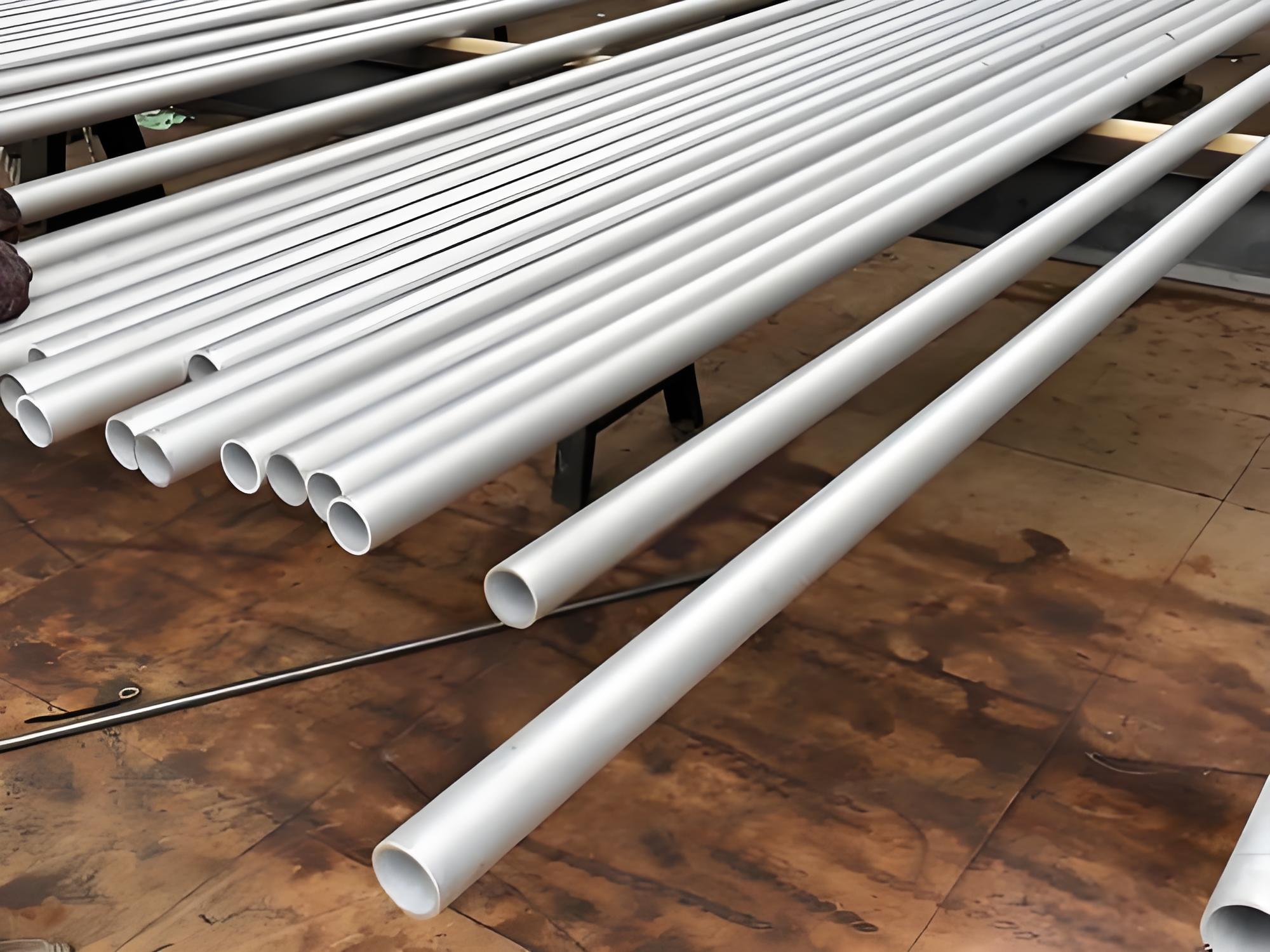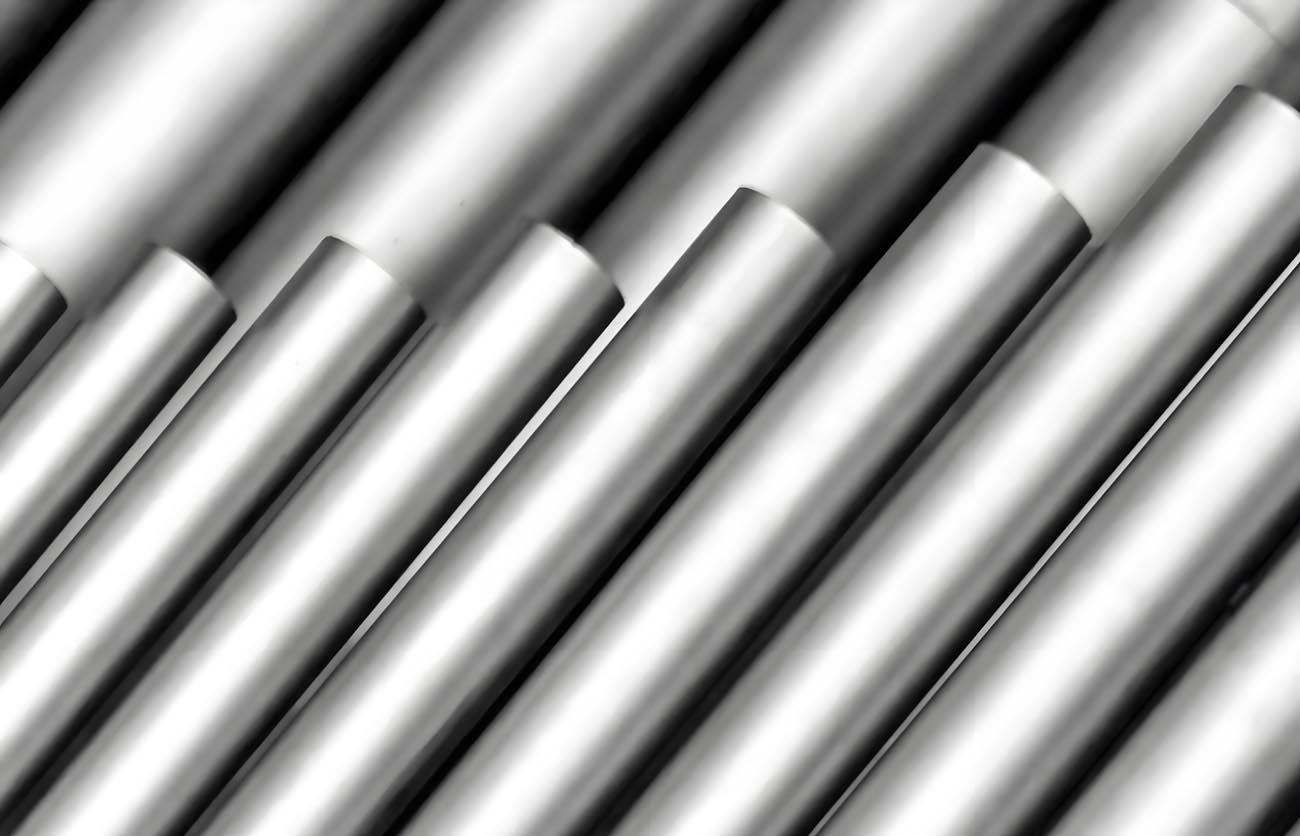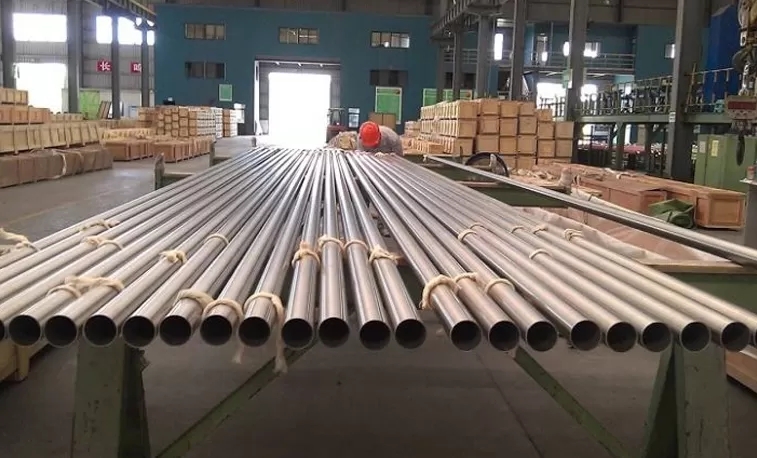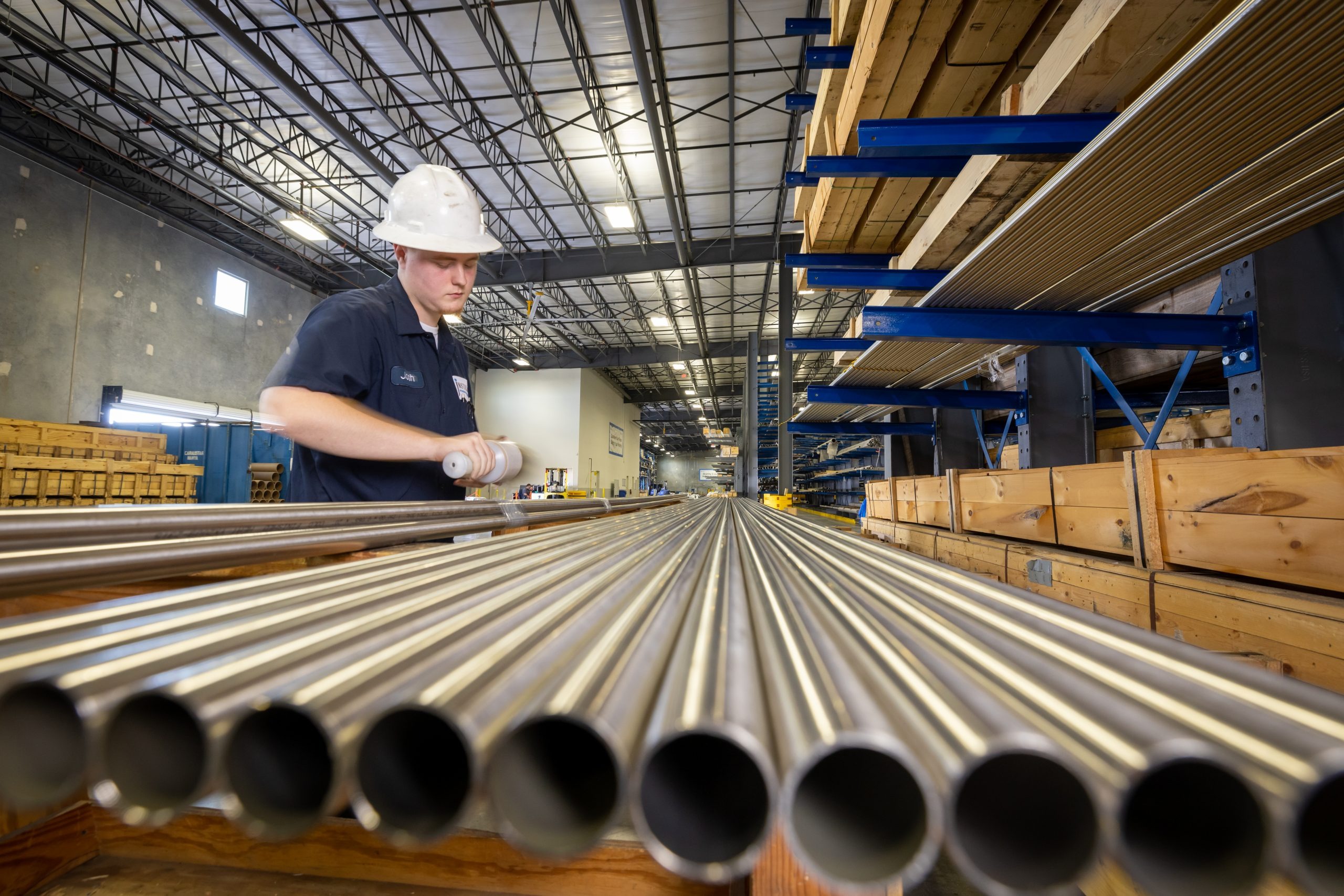Alloy HX Steel Tube | UNS N06002 | Hastelloy X & Inconel X
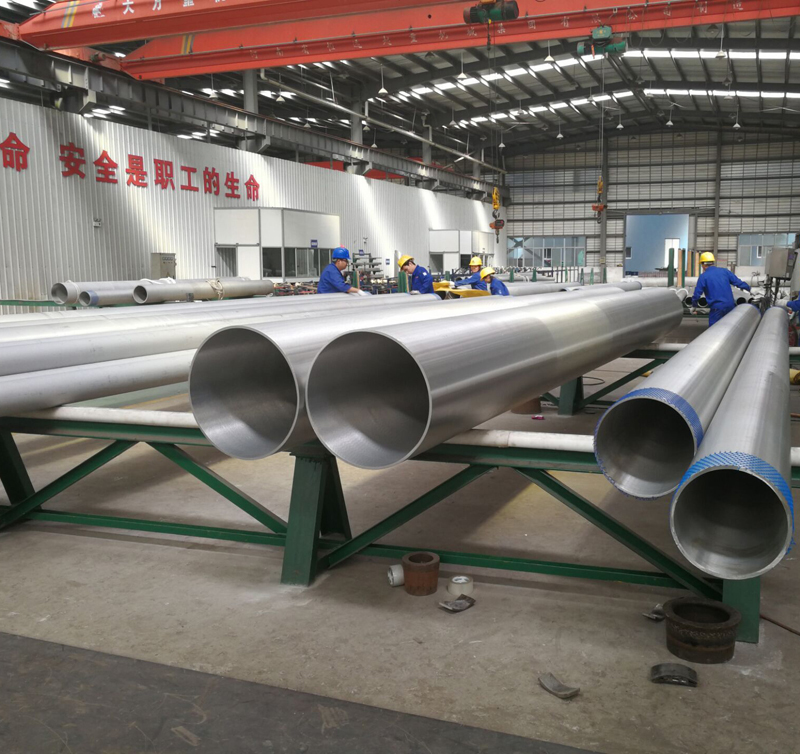
Alloy HX Steel Tube (UNS N06002)
Alloy HX (UNS N06002), also known as Hastelloy X, is a nickel-chromium-iron-molybdenum alloy known for its exceptional strength and oxidation resistance at high temperatures. It is widely used in gas turbine engines, industrial furnace applications, and other high-temperature environments.
Chemical Composition
The typical chemical composition of Alloy HX is as follows:
| Element | Percentage (%) |
|---|---|
| Nickel (Ni) | 47.0 – 53.0 |
| Chromium (Cr) | 20.5 – 23.0 |
| Iron (Fe) | 17.0 – 20.0 |
| Molybdenum (Mo) | 8.0 – 10.0 |
| Tungsten (W) | 0.20 – 1.0 |
| Cobalt (Co) | 1.0 – 2.5 |
| Manganese (Mn) | 1.0 max |
| Silicon (Si) | 1.0 max |
| Carbon (C) | 0.05 – 0.15 |
| Phosphorus (P) | 0.04 max |
| Sulfur (S) | 0.03 max |
| Boron (B) | 0.008 max |
Mechanical Properties
The mechanical properties of Alloy HX are suitable for high-temperature applications, providing excellent strength and stability.
- Tensile Strength: 750 MPa (109 ksi) min
- Yield Strength (0.2% offset): 310 MPa (45 ksi) min
- Elongation: 30% min
- Hardness: 200-240 HB
Physical Properties
- Density: 8.22 g/cm³ (0.297 lb/in³)
- Melting Range: 1260-1355°C (2300-2470°F)
- Specific Heat Capacity: 0.102 cal/g-°C (at 20°C)
- Thermal Conductivity: 11.5 W/m·K (at 20°C)
- Electrical Resistivity: 1.23 µΩ·m (at 20°C)
- Modulus of Elasticity: 205 GPa (at 20°C)
- Poisson’s Ratio: 0.33 (at 20°C)
Industries Predominantly Using Alloy HX
- Aerospace:
- Gas turbine engines
- Combustion chambers
- Afterburners and turbine blades
- Industrial Furnace Applications:
- Furnace linings
- Retorts and muffles
- Heat-treating equipment
- Chemical Processing:
- Heat exchangers
- Reactor vessels
- Piping systems
Typical Manufacturing Specifications
- ASTM B619: Specification for welded nickel and nickel-cobalt alloy pipe
- ASTM B622: Specification for seamless nickel and nickel-cobalt alloy pipe and tube
- ASTM B626: Specification for welded nickel and nickel-cobalt alloy tubing
- ASME SB619/SB622/SB626: Standards for nickel alloy seamless and welded pipe and tube
Available Tube Product Forms
- Seamless Tubing
- Welded Tubing
- Straight Lengths
- Coiled Tubing
Typical Applications
- Aerospace:
- Components in gas turbine engines such as combustion chambers, afterburners, and turbine blades.
- Industrial Furnace Applications:
- Furnace linings, retorts, muffles, and other heat-treating equipment that operate at high temperatures.
- Chemical Processing:
- Heat exchangers, reactor vessels, and piping systems used in harsh chemical environments.
Welding and Fabrication Characteristics
Welding
- Weldability:
- Alloy HX has good weldability and can be welded using methods such as Gas Tungsten Arc Welding (GTAW/TIG), Gas Metal Arc Welding (GMAW/MIG), and Shielded Metal Arc Welding (SMAW).
- Filler Metals: Common filler metals include ERNiCrMo-2 and ERNiCrMo-3 for GTAW and GMAW processes, and ENiCrMo-2 for SMAW.
- Preheating and Post-Weld Heat Treatment (PWHT):
- Preheating: Generally not required, but maintaining cleanliness is critical to prevent contamination.
- PWHT: Post-weld heat treatment is typically performed to relieve stresses and stabilize the structure. This is typically done at temperatures between 1175°C and 1230°C (2150°F and 2250°F).
- Weld Defects and How to Avoid Them:
- Porosity: Ensure clean surfaces and proper shielding gases to minimize porosity.
- Cracking: Control welding parameters carefully to avoid hot cracking, particularly in thick sections.
Fabrication
- Machining:
- General: Alloy HX is challenging to machine due to its high strength and work hardening properties. Using carbide tools, low cutting speeds, and high feed rates can improve machinability.
- Coolants: Liberal use of cutting fluids is recommended to cool and lubricate during machining, enhancing tool life and surface finish.
- Forming:
- Cold Forming: Alloy HX can be cold-formed using standard techniques, but its high work hardening rate may necessitate intermediate annealing for extensive deformation.
- Hot Forming: Hot forming is typically performed at temperatures between 1175°C and 1230°C (2150°F and 2250°F). Proper temperature control is crucial to avoid cracking and ensure uniform material properties.
- Heat Treatments:
-
- Solution Annealing: Typically performed at 1175°C to 1230°C (2150°F to 2250°F), followed by rapid cooling to achieve a homogeneous microstructure.
- Stress Relief: Stress relief annealing can be performed to reduce residual stresses from welding or forming operations.
-
- Surface Cleaning:
- Pickling: Use a solution of nitric and hydrofluoric acids to remove oxides and scale formed during welding or heat treatment.
- Mechanical Cleaning: Grinding and brushing can also be used, but care should be taken to avoid contamination with iron particles, which can lead to corrosion.
Best Practices for Welding and Fabrication
- Cleanliness: Maintaining a clean work environment is crucial. Contaminants such as sulfur, phosphorus, lead, and zinc can lead to weld defects and corrosion issues.
- Tooling: Use dedicated tools for Alloy HX to avoid cross-contamination from other metals.
- Controlled Environment: If possible, perform welding and fabrication in a controlled environment to minimize the introduction of impurities.
- Training: Ensure that welders and fabricators are specifically trained for handling high-nickel alloys to achieve the best results.
Conclusion
Alloy HX (UNS N06002) offers excellent high-temperature strength and oxidation resistance, making it suitable for demanding industrial applications such as aerospace, industrial furnace components, and chemical processing. By adhering to best practices and understanding the specific requirements of this alloy, engineers and fabricators can ensure high-quality results and reliable performance in various high-temperature and corrosive environments.

